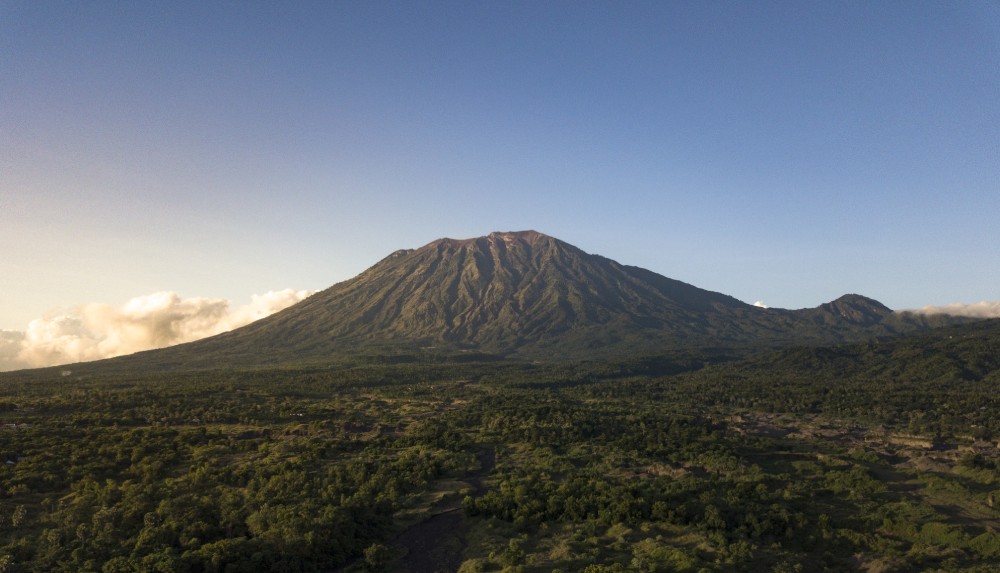
There are many stories that surround Bali’s highest and holiest mountain. From how it was formed to the dragon that lives within, Mt. Agung is more than just a towering volcano on the landscape.
Standing at 3,031 metres high in Bali’s eastern-most regency of Karangasem, Mt. Agung dominates the horizon on clear days, appearing suddenly after rains have washed the sky of clouds. In such a moment, it’s easy to understand why this mass of land is so revered by the Balinese Hindu. It is imposing, majestic.
With ancient roots in animism and ancestral worship, even ‘modernised’ Balinese Hinduism continues to hold an essence of these past beliefs. Mt. Agung is considered ‘true north’ in Bali, or kaja, a tool of orientation in relation of ‘to the mountain’ or it opposite, kelod, ‘to the sea’. Above the mountain itself is said to be the abode of the gods and deities, called the ‘old world’, tanah ane wayah, from where deified ancestors shall descend upon reincarnation.
So holy is this mountain that it is peppered with temples, the most famous and important being the Pura Besakih temple complex. So holy is this mountain that it even has an origin story that ties its legendary status to that of the cosmic mountain of Hindu lore — the first of the Agung legends.
A Slice of Heaven
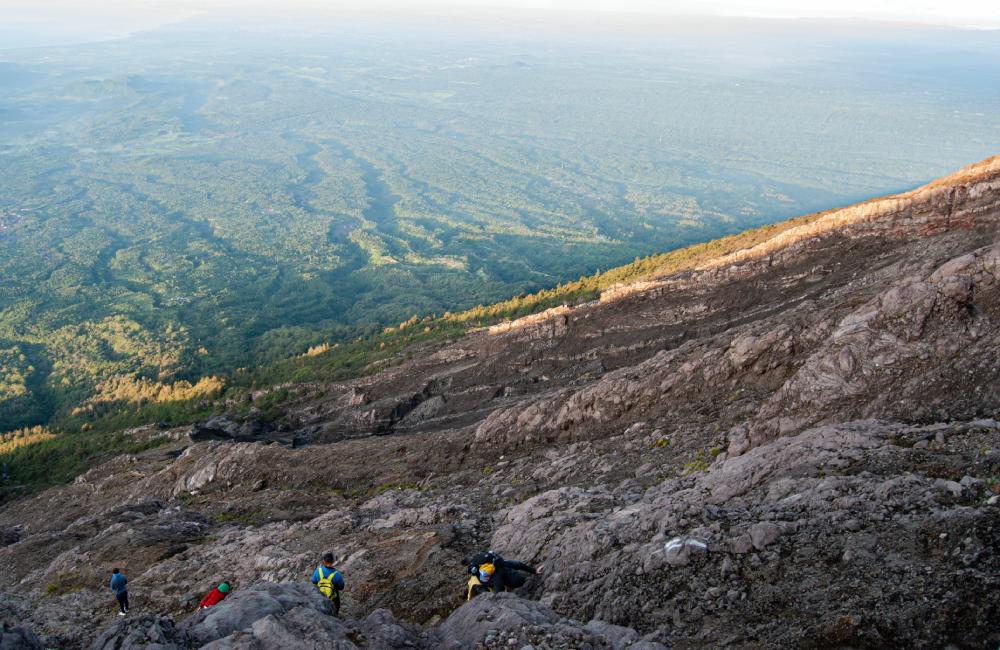
In a 15th century manuscript from Java, known as the Tantu Pageleran written in the ancient language of Kawi, there is a mythical ‘origin story’ of Java. It is said that the island was thrashing wildly in the sea and had to be ‘pinned down’. Brahma and Wisnu used part of the cosmic mountain, ‘Mahameru’, as a weight to settle the island in position. It was placed on the east side of Java and today is called Mt. Semeru.
The story continues in Bali’s own Babad Pasek chronicle, which states that Bhatara Pasupati (a manifestation of Siwa) who resides at the top of Mt. Semeru saw how Bali, too, was floating wildly in the sea. He ordered Badawangnala (the cosmic turtle) and the three cosmic serpents – Anantaboga, Basuki and Taksaka – to slice the tip of of Mt. Semeru and place it upon this turbulent neighbouring island. This is how Mt. Agung came to be.
Lord Pasupati sent his children to watch over Bali. One was Dewi Danu, goddess of the lake who took sanctuary in Batur; another is Putrajaya, who took sanctuary in Mt.Agung, venerated as ‘Hyang Mahadewa’. This deity is still prayed to as a manifestation of Siwa upon Agung.
Dragon’s Den
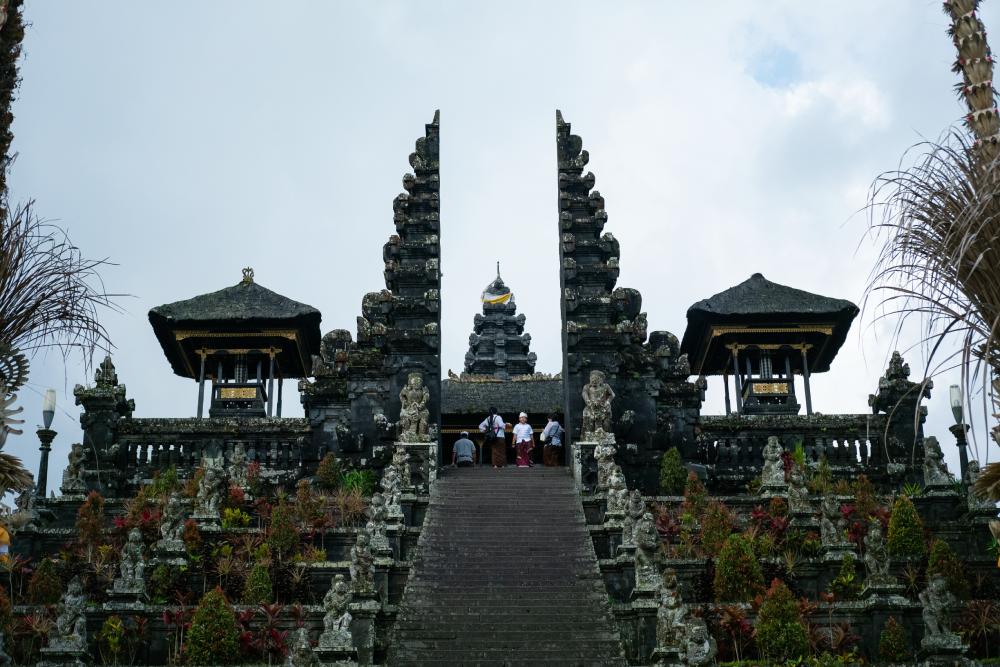
This relocation of epic and cosmic proportions brings us to our next Agung legend. It is believed that deep within the belly of the volcano, inside its crater of fire and magma, a dragon has made its home.
Not just any dragon of course, it is the great dragon Basuki, revered along with the other two cosmic serpents as manifestations of the Trimurthi. Basuki, having helped to carry Mt. Agung from Java, found refuge within the mountain and stayed to this day… they say.
Why does the dragon’s name sound familiar? Well, we have mentioned already Pura Besakih, the mother temple, which takes its name from the nearby village of Besakih. In Sanskrit the word wasuki means safe, or sanctuary; and funnily enough the dragon Basuki is the symbol of safety and prosperity. A mere coincidence?
Caved In
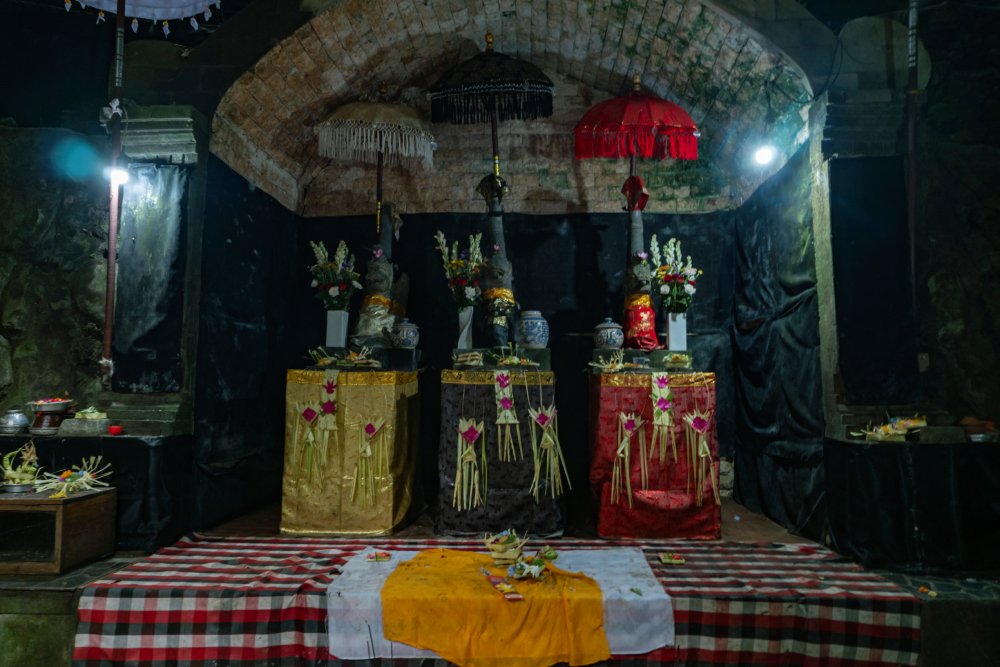
The legends begin to link… at the very bottom of Pura Basuki is a temple dedicated to three cosmic dragons, Pura Goa Raja – especially Basuki. It is said to be an entrance to a cave that travels deep into the heart of Mt.Agung, and beyond.
In this small, obscure temple, situated within a natural stone alcove, with water dripping down its walls, are openings of two different caves. Since their discovery, however, they have either been closed up or have caved in since Agung’s last eruption. Where could they lead?
One cave is said to lead to the crater of Mt.Agung, with witnesses noting that smoke and ash were seen here during both the 2017 and 1963 eruptions; as well the odious reek of sulphur. The other cave is said to connect to Pura Goa Lawah, the Bat Cave Temple in Klungkung, 30km away.
The story behind this, passed down through the generations, is that during a cockfight at Goa Lawah one of the roosters wandered off. The owner thought his prized fighter to be lost, until one day it was found roaming the alcove up in Besakih, where Goa Raja (king’s cave) is now!
Slices and Straits
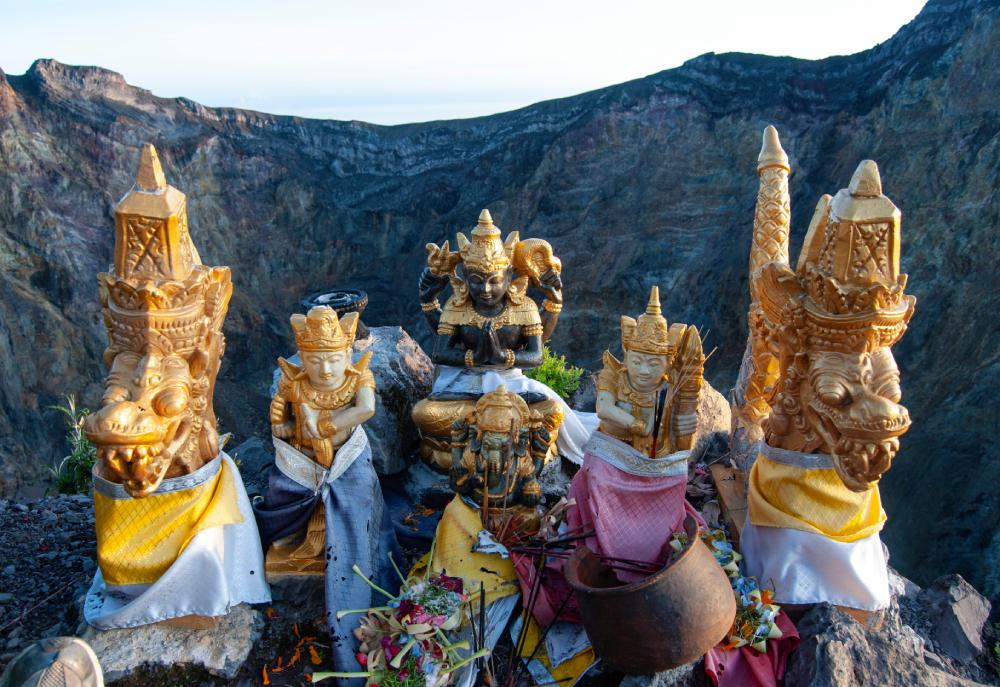
Goa Raja is at the source of another origin story. Far before there was the temple, an old sage by the name of Dang Hyang Sidimantra, would come to visit the dragon Basuki. The cave opening here was the entrance to Basuki’s lair deep within.
Knowing the power and might of the cosmic serpent, Sidimantra would bring milk, honey and eggs as an offering to Basuki. For years the sage and the dragon enjoyed their relationship.
One day, Sidimantra’s gambling son was in need of money. His name was Manik Angkeran and his addiction was a major concern to his well to-do parents, who had helped him on many occasions. But, having lost it all in another village cock fight, Manik was on his own — Mum and Dad could no longer support his habits.
Desperate, Manik turned to Goa Raja in search of the dragon. Bringing nothing, he begged to the dragon to help him, to give him treasures. The dragon refused, turning away and entering his lair. That was when Manik saw it, a jewelled crown on the tip of the dragon’s tail. With the same stupidity that lost him his money, he took out his keris dagger and sliced the dragon’s tail, along with the crown.
A dragon that carried a mountain is not to be trifled with: Basuki returned and scorched Manik to ash and dust. Upon hearing the news, Sidimantra beseeched Basuki for his son’s life returned, saying how he had presented offerings to the dragon for so long. Basuki, remembering the devotion of the kind sage, revived Manik on one condition. That they would be physically separated from the same lands.
And so, Manik was reanimated but was then brought to lands far away in the west. From north to south the land was gouged, the ocean waters filling in the space. Now they were separated by sea — and this was the creation of the Bali Straits, the separation of Bali and Java.
Of course, there are contradictions to these legends! If Bali was not separated from Java, why then was Basuki living in the mountain brought over to settle the turbulent island? Ah, well, we must take these stories with a grain of salt, remembering that each of them has their lessons and morals.
What morals do you think the legends of Agung are telling us?







